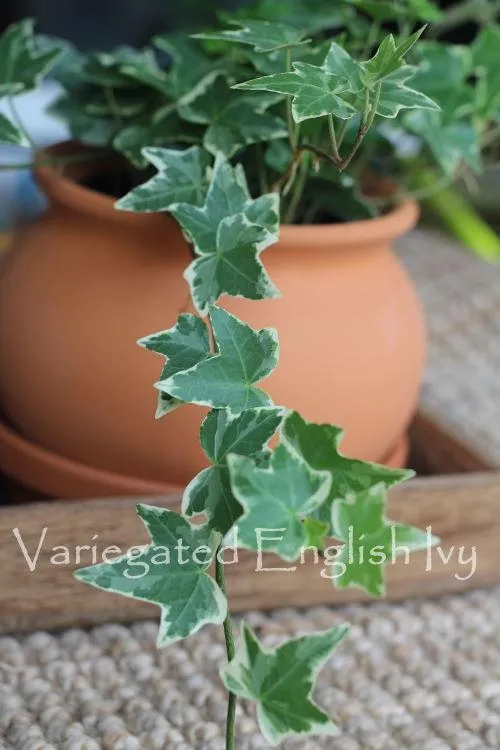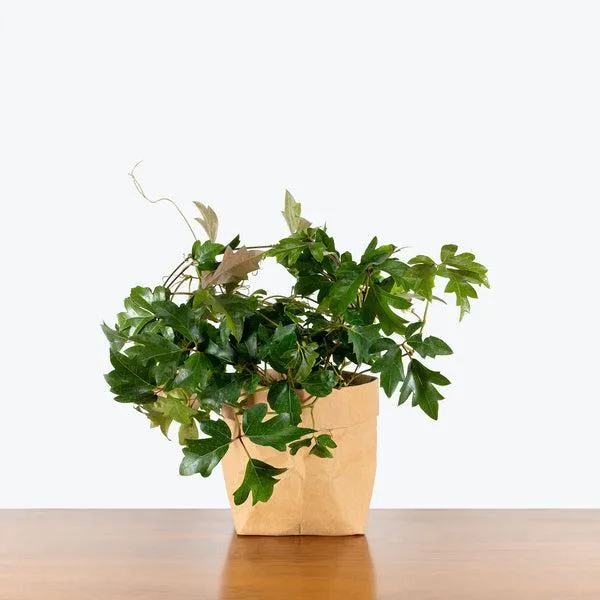The Complete Guide to Watering Your Ivy Plant
If you’ve ever searched “how often should I water my ivy plant”, you’re not alone. Caring for ivy can seem mysterious since they’re such hardy plants. But with some understanding of their needs, you can keep your ivy thriving. In this article, I’ll answer all your questions about watering ivy with tips from my own experience as an avid gardener.
Understanding Ivy’s Water Needs
The first step is knowing how much water ivy actually requires. Ivy is classified as a vascular epiphyte, meaning it can grow on other surfaces using water and nutrients from the air, rather than soil. This allows ivy to survive with less water than typical houseplants. However, when planted in soil, ivy still needs regular moisture to stay healthy.
Several factors influence an ivy’s exact watering needs:
- Variety – Some ivy species like English ivy are hardier than others likeBoston ivy.
- Size – Larger, more established ivy plants can go longer between waterings.
- Light – Ivy getting strong sunlight will dry out faster than shade ivy.
- Soil – More porous soils like pots will dry out quicker than garden soil.
- Humidity – Higher indoor humidity means less frequent watering.
Rather than following a strict schedule, it’s best to check your ivy’s soil before watering. The top inch should dry out slightly between waterings.
Signs Your Ivy Needs Water
Pay attention to these clues that it’s time to water:
- Leaves start to look limp or wilt slightly
- Top soil is dry to the touch
- Pot feels significantly lighter when picked up
- Leaves lose their shine and take on a dull appearance
- Every 5-7 days for ivy in bright, south-facing windows
- Every 10-14 days for shaded or indoor ivy
- Every 2-3 weeks for ivy outdoors in mild, humid climates
- Water thoroughly until water drains freely from the bottom of the pot.
- Pour water slowly to avoid disturbing the soil surface and compacting roots.
- Don’t just sprinkle a little bit of water. Soak the entire soil thoroughly.
- Empty any saucer or tray under the pot 30 minutes after watering to prevent roots from sitting in water.
- Mist leaves 1-2 times a week for additional humidity. Ivy loves high humidity.
- Water before bringing ivy indoors in fall or if repotting to settle roots.
- Cut back watering a small bit in winter when ivy is semi-dormant.
- Water new ivy more often as it adjusts to a new home.
- Flush excess fertilizer from soil with water 1-2 weeks after feeding.
- Overwatering, which can cause root rot and browning.
- Forgetting to water for too long and allowing soil to bone dry.
- Only watering a small amount versus thoroughly soaking soil.
- Leaving ivy sitting in waterlogged saucers or trays.
- Using cold tap water versus lukewarm water.
How often should I water my ivy plant?
Ivy plants like moist soil, but they don’t like soggy soil. Basically, you’ll want to water them when the top inch or so of soil dries out. This usually works out to be about once a week. But it really depends on factors like light, temperature, and humidity. If the leaves start to look wrinkled or droopy, it’s a sign the ivy needs some H2O.
What’s the best way to water my ivy?
The best method is gentle watering at the soil level to avoid getting the leaves wet. You don’t want the foilage soaked as it can cause leaf drop. At the same time, thorough watering where the soil is dampened all the way through is important so the roots get hydrated. Aiming the water at the base of the plant and allowing excess to drain through the holes in the bottom of the pot works well.
Should I use fertilizer on my ivy?
Fertilizing your ivy occasionally during the spring and summer can be beneficial. Look for a houseplant fertilizer that’s labeled for foliage plants and use it according to package instructions. However, overfertilizing can also cause problems. Perhaps start with a half strength solution and increase cautiously if the ivy’s growth appears to need a boost. Too many chemicals can’t be healthy for any living thing!
My ivy’s leaves are turning yellow, what’s wrong?
Yellow leaves on an ivy plant can mean several different things. It may be due to underwatering and the soil drying out excessively. Overwatering can also cause yellowing from root rot. Changes in light or temperature stress may also trigger the problem. Check drainage holes to rule out soggy soil. Does the pot have adequate holes? Remember that association with grandma’s houseplant? Hers was always so green and lush…
How do I promote bushier growth in my ivy?
To get a fuller, more lush appearance, you may want to prune your ivy from time to time. Cut developing shoots back to two or three leaves to stimulate branching. Ivy grows rapidly, so new shoots will soon sprout from these pruned areas. Regular trimming removes leggy growth and encourages a dense, mounded habit. Of course, only prune if the plant appears vigorous – a struggling ivy doesn’t need the additional stress!
My ivy is starting to look straggly, what should I do?
Sometimes ivies can become straggly looking over time. This is often due to becoming pot bound or root bound with not enough space in the container. Repotting into a slightly larger pot with fresh soil can work wonders. Simply tease the roots apart gently and replant in a pot with drainage holes that’s only an inch or two wider. Within a few weeks, new leaves and vines should start to fill out again. Compost or organic soil amendments stimulate root growth too.
Is it ok to keep my ivy outside in the summer?
English ivy can handle some time outdoors when temperatures are mild, but it’s still considered a houseplant. Putting the container in a partially shaded spot on the patio may be fine on nice days. However, direct sun can scorch the leaves. Watch that it doesn’t dry out faster outside. Better to bring indoors before chance of frost. Unless you have a really stunning cultivar, is it worth risking your ivy buddy’s safety?
Catching dehydration early is important. Once leaves yellow or brown from lack of water, it can stunt growth or cause permanent damage.
Determining a Watering Frequency
As a general guideline, most house ivies only need water every 7-14 days on average. But frequencies can vary from:

I always err on watering less versus overwatering, which can cause root rot or browning leaves. Feel free to experiment too – don’t be afraid to let soil dry out more occasionally to see how your specific ivy reacts.
How to Water Ivy Properly
When watering time arrives, follow these steps for best results:
I like to use a watering can with a long, thin spout for precise watering without wetting leaves. Either room temperature or cool water works well for ivy.
Special Watering Tips
Here are some unique watering tips from my years of caring for ivy:
Common Ivy Watering Mistakes
We’ve all been there – it’s easy to mess up ivy care. Here are mistakes I see commonly that lead to issues:
With observant care and avoiding these pitfalls, your ivy should thrive even with infrequent watering. And don’t stress if you slip up – ivy are pretty resilient.
Q&A About Ivy Watering Questions
Here are answers to other common questions:

Q: Can I water my ivy from the tray instead of top watering?
Yes, letting water soak up is fine as long as the entire soil mass is thoroughly moistened. Just be sure to dump excess after 30 minutes.
Q: How do I know if my ivy isn’t getting enough water?
Signs of underwatering include wilted, limp, or yellow leaves. Check soil moisture regularly to prevent dehydration.
Q: What if my ivy’s leaves get wet when watering?
No worries – ivy is tough. Just wipe droplets off with a paper towel if you’re concerned about sunburning. The plant cares more about hydrated soil.
I hope these tips help you care for your ivy with confidence! Feel free to experiment to learn your plant’s preferences. With regular moisture checks and avoiding underwatering, you can keep your ivy thriving for years to come.

Watering Schedule for Ivy Plants
| Soil Dryness | Months | Watering Frequency |
|---|---|---|
| Top 1 inch is dry | Spring, Summer, Fall | Every 5-7 days |
| Top 2 inches is dry | Winter | Every 10-14 days |
| Leaves start to wilt | All year | Water immediately |
| Light/Sun Exposure | Watering Frequency | |
| Bright indirect sunlight | Every 5-7 days | |
| Low indoor light | Every 10-14 days |
